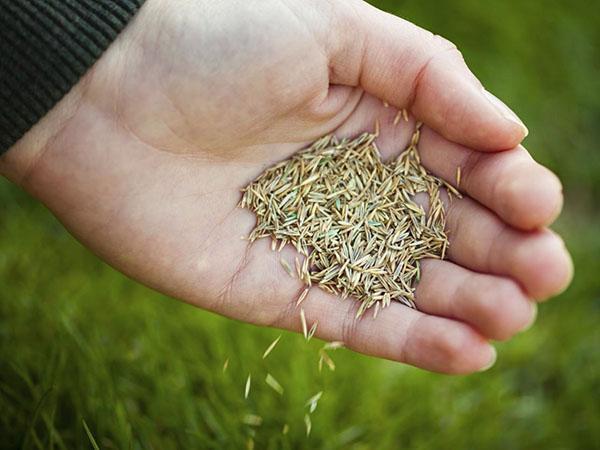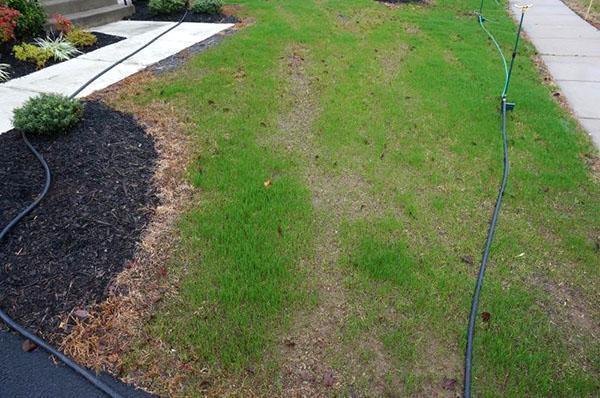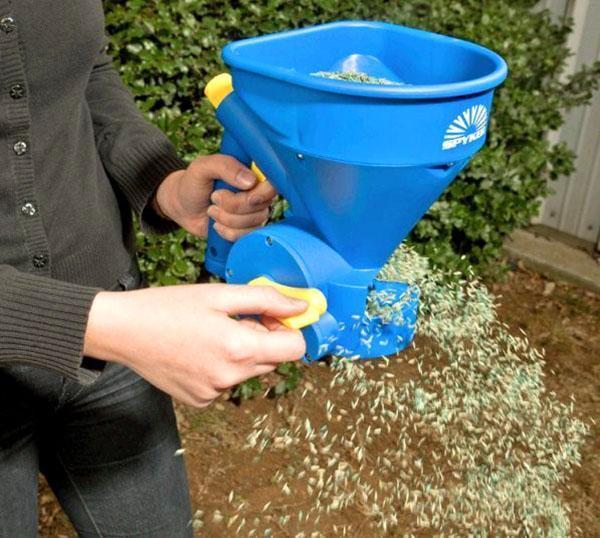Lawn seeder: cheap to expensive
 A good lawn should be uniformly green, well-groomed and neatly trimmed. If the means for mechanizing grass mowing are already familiar, then a lawn seeder is not yet often found in the arsenal of a summer resident. But such a device not only helps to facilitate laborious lawn maintenance, but also ensures the most even distribution of seeds in the soil.
A good lawn should be uniformly green, well-groomed and neatly trimmed. If the means for mechanizing grass mowing are already familiar, then a lawn seeder is not yet often found in the arsenal of a summer resident. But such a device not only helps to facilitate laborious lawn maintenance, but also ensures the most even distribution of seeds in the soil.

With manual seeding, you cannot achieve perfect coverage. Seeds scattered from a handful or from home-made devices fall unevenly. Even the second, perpendicular to the first pass through the site does not help.
The lawn seeder solves the problem. But how to choose the right design from the many devices offered by manufacturers?
Among the seeders designed for sowing the lawn, there are models that are strikingly different from each other:
- appearance;
- dimensions;
- principles of action;
- at a price.
The device and varieties of manual seeders for lawn
 The simplest and cheapest are manual lawn seeders. Their smallest varieties are intended for sowing small areas or restoring an existing lawn. These are rotary devices consisting of:
The simplest and cheapest are manual lawn seeders. Their smallest varieties are intended for sowing small areas or restoring an existing lawn. These are rotary devices consisting of:
- from the seed container;
- from the device for their supply;
- from a rotary spreader.
It is necessary to control the entire process manually, and you have to carry the device across the lawn by hand.
 If you have to create lawn with an area of not a few square meters, but a little more, then you cannot do without a larger and more productive model.
If you have to create lawn with an area of not a few square meters, but a little more, then you cannot do without a larger and more productive model.
Such a device is equipped with a more capacious container for seeds, so it is inconvenient to carry it by hand. A wheeled cart allows the lawn seeder to move. It remains for the person operating it to push the seeder across the lawn and monitor the complete coverage of the entire cultivated area.
These seeders differ:
- bunker volume;
- width and density of sowing seeds;
- availability of additional functions.
When planning the purchase of such a device, you need to clearly imagine the area and configuration of the future grass lawn, calculate the number of seeds for sowing.
In the model with a large hopper, you do not need to constantly add seed, but at the same time, bulky structures will not unfold everywhere, they are heavier and more expensive. Miniature seeders are many times cheaper, but evenly applying seeds with and with the help is possible only in a limited area.
In the simplest and at the same time the most affordable models of lawn seeders, there is no possibility of planting seeds that have fallen into the ground.
 Therefore, after the completion of the first stage of work, the site must be rolled out. special roller or gently roll over the soil with a fan rake or level the lawn with the back of a regular one.
Therefore, after the completion of the first stage of work, the site must be rolled out. special roller or gently roll over the soil with a fan rake or level the lawn with the back of a regular one.
But all manual lawn seeders can be successfully used not only for their intended purpose. They are also applicable for fertilization, both on the lawn and on garden beds, in a potato field or under fruit trees in the garden.
In winter, salt is scattered on the backyard with a seeder to remove ice on the paths and driveways.
The larger the lawn, the more difficult it is to sow it.Therefore, owners of suburban areas, in addition to manual lawn seeders, are offered mechanized and professional high-performance models.
Lawn seeders
If the volume of simultaneous loading of seeds exceeds 10-15 kg, manually moving the seeder is already problematic.
 Such models are either equipped with a motor and converted into mechanized carts that run on gasoline or electricity. In this case, sowing is even more automated, and more expensive and advanced seeders are equipped with:
Such models are either equipped with a motor and converted into mechanized carts that run on gasoline or electricity. In this case, sowing is even more automated, and more expensive and advanced seeders are equipped with:
- a signaling device triggered when the bunker is empty;
- the mechanism of sowing intensity change;
- controlled seed discharge.
Trailed and mounted lawn seeders are used in large areas, for example, when creating and maintaining turf in stadiums or in parks. Due to the bulkiness, high cost and the need to use tractor equipment, this category of seeders is rarely used on household plots.